Stretching is not just for athletes. The following are some of the reasons why stretching may be beneficial for you:
1. Increase your range of motion. Stretching helps to warm up muscles and joints. Synovial fluid is released from the cartilage within the joints, lubricating them and keeping bones moving freely. Elongation of muscles and tendons becomes even more important as we age as our range of motion can become quite restricted along with loss of joint flexibility. Getting into a stretching routine will help keep us strong and flexible.
2. Injury prevention. Stretching will help us become stronger and more flexible in performing a variety of physical activities, including household chores. Stretching affects the viscoelastic behavior of muscle and tendon. (Viscoelasticity refers to the ability to exhibit a change in length as well as amount of flow and movement). Flexible muscles are able to distribute strength, increased balance and use less energy in the process.
3. Reduce muscle tension. Stretching is helpful in getting blood flowing into the muscles and joints. This improves movement, circulation, promotes lower blood pressure and lessens fatigue. Mentally, the relaxing signals sent to the brain during stretching are carried on for several hours after the exercise.
Tips when stretching:
- Focus on major muscle groups. Neck, shoulders, low back, hips, thighs, hamstrings, calves. Stretch both sides (right and left) equally.
- Slow and steady. Hold the stretch for about 30 seconds, breathing with each stretch. Inhale during rest and exhale while doing work. Don’t bounce. Bouncing can cause small tears in the muscle, tendons or ligaments leaving scar tissue as it heals. This will actually make you less flexible over time.
- Be consistent. You can achieve the greatest benefits by stretching regularly, at least 3 times a week. Stretching should feel good, increasing your flexibility with gentle tension.
Beginner Gluteal Stretches – Single Knee to Opposite Chest:
Begin by lying on back, with both knees bent. Take a breath in and as you exhale bring right knee towards the left side of your chest, grab with both hands and pull towards chest to hold for 20 seconds. Repeat for the left side.
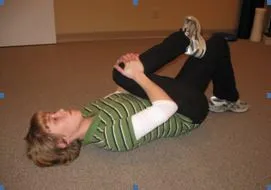
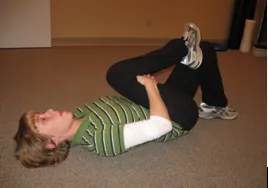
Lying on your back, place your right foot on your left knee. Take a breath in, and as you exhale bring your left knee towards the left side of your chest and hold with both hands under your left knee for 20 sec. Repeat other side.
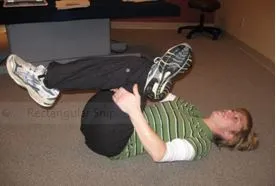
Rock the Baby: Seated exercise, begin by lifting one leg up and grabbing under the knee and ankle. Stretch for 5-10 seconds and then move leg across your body for another 5-10 second stretch. Remember to breathe!
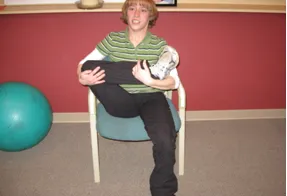
Lying Knee Extension: Lying on your back, take a breath in and as you exhale bring one leg towards your chest, grab behind knee (or use a towel to wrap behind your leg) and bring leg toward chest. This can be done lying in a doorway, with one leg resting on the doorframe. Hold for 30 seconds, breathe!
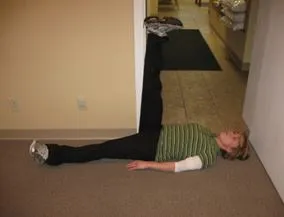

Dick, F. Sports Training Principles. London, A & C Black. 1997
Lipowitz, Alan J. Synovial Fluid Chapter 86 https://cal.vet.upenn.edu/projects/saortho/chapter_86/86mast.htm
https://www.mayoclinic.com/health/stretching/HQ014447 Stretching: Focus on flexibility, accessed 3/12/13
https://www.medicalnewstoday.com/releases/40656.php New Insight Into Joint Lubrication That Keeps Osteoarthritis At Bay
Article Date: 02 Apr 2006 – 5:00 PDT
National Strength & Conditioning Association Human Kinetics. 2002 Champaign, IL Essentials of strength training and conditioning,2nd ed
Joint cracking and popping: Understanding noises that accompany articular release Marina G. Protapapas, DO, Tyler C. Cymet, DO https://www.jaoa.org/content/102/5/283.full.pdf
Shrier, Ian. Does stretching help prevent injuries? Blackwell Publishing 12/26/2006, page 36 https://www.blackwellpublishing.com/medicine/bmj/sportsmedicine/pdfs/ch3.pdf